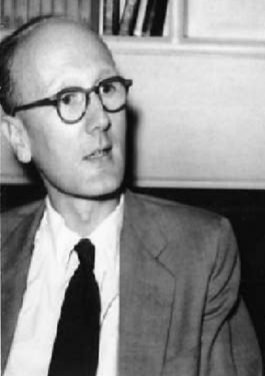Related Research Articles

Pacifism is the opposition or resistance to war, militarism or violence. The word pacifism was coined by the French peace campaigner Émile Arnaud and adopted by other peace activists at the tenth Universal Peace Congress in Glasgow in 1901. A related term is ahimsa, which is a core philosophy in Indian religions such as Hinduism, Buddhism, and Jainism. While modern connotations are recent, having been explicated since the 19th century, ancient references abound.
The Link was established in July 1937 as an "independent non-party organisation to promote Anglo-German friendship". It generally operated as a cultural organisation, although its journal, the Anglo-German Review, reflected the pro-Nazi views of Barry Domvile, and particularly in London it attracted a number of antisemites and pro-Nazis. At its height the membership numbered around 4,300.
Peace churches are Christian churches, groups or communities advocating Christian pacifism or Biblical nonresistance. The term historic peace churches refers specifically only to three church groups among pacifist churches:

The Friends' Ambulance Unit (FAU) was a volunteer ambulance service, founded by individual members of the British Religious Society of Friends (Quakers), in line with their Peace Testimony. The FAU operated from 1914–1919, 1939–1946 and 1946–1959 in 25 different countries around the world. It was independent of the Quakers' organisation and chiefly staffed by registered conscientious objectors.

Dame Kathleen Lonsdale was an Irish crystallographer, pacifist, and prison reform activist. She proved, in 1929, that the benzene ring is flat by using X-ray diffraction methods to elucidate the structure of hexamethylbenzene. She was the first to use Fourier spectral methods while solving the structure of hexachlorobenzene in 1931. During her career she attained several firsts for female scientists, including being one of the first two women elected a Fellow of the Royal Society (FRS) in 1945, first female professor at University College London, first woman president of the International Union of Crystallography, and first woman president of the British Association for the Advancement of Science.

Joseph Sturge was an English Quaker, abolitionist and activist. He founded the British and Foreign Anti-Slavery Society. He worked throughout his life in Radical political actions supporting pacifism, working-class rights, and the universal emancipation of slaves. In the late 1830s, he published two books about the apprenticeship system in Jamaica, which helped persuade the British Parliament to adopt an earlier full emancipation date. In Jamaica, Sturge also helped found Free Villages with the Baptists, to provide living quarters for freed slaves; one was named Sturge Town in his memory.

Peace News (PN) is a pacifist magazine first published on 6 June 1936 to serve the peace movement in the United Kingdom. From later in 1936 to April 1961 it was the official paper of the Peace Pledge Union (PPU), and from 1990 to 2004 was co-published with War Resisters' International.
The Peace Pledge Union (PPU) is a non-governmental organisation that promotes pacifism, based in the United Kingdom. Its members are signatories to the following pledge: "War is a crime against humanity. I renounce war, and am therefore determined not to support any kind of war. I am also determined to work for the removal of all causes of war", and campaign to promote peaceful and nonviolent solutions to conflict. The PPU forms the British section of War Resisters' International.
Mark Plowman, generally known as Max Plowman, was a British writer and pacifist.

Friedrich Siegmund-Schultze was a German academic working in theology, social pedagogy and social ethics, as well as a pioneer of peace movements.
Howard Haines Brinton (1884–1973) was an author, professor and director whose work influenced the Religious Society of Friends movement for much of the 20th century. His books ranged from Quaker journal anthologies to philosophical and historical dissertations on the faith, establishing him as a prominent commentator on the Society of Friends.

Sybil Morrison was a British pacifist and a suffragist who was active with several other radical causes.
Hugh Brock (1914–1985) was a lifelong British pacifist, editor of Peace News between 1955 and 1964, a promoter of nonviolent direct action and a founder of the Direct Action Committee, a forerunner of the Committee of 100.
Operation Gandhi was a pacifist group in Britain that carried out the country’s first nonviolent direct action protests in 1952.
Margaret Sturge Thorp, also known as "The Peace Angel", was a peace activist and labour activist active in Australia in the 20th century. A Quaker, her religious beliefs guided her to a life of advocating for a variety of pacifist and feminist causes.
Kathleen Innes was a British Quaker, educator, writer and pacifist, who served as the joint chair of the international headquarters for the Women's International League for Peace and Freedom (WILPF) from 1937 to 1946.

Sydney Dawson Bailey was an English author, pacifist, and expert on international affairs. He worked at and was head of the Quaker United Nations Office during the 1950s. He was a conscientious objector during World War II, and spent several years in the Friends' Ambulance Unit. Bailey wrote 17 books and worked at the Carnegie Endowment for International Peace from 1958 to 1960 as a visiting scholar. He then left the endowment and was involved in various negotiations and advisory councils before his death in 1995.
Theodora Wilson Wilson was a British writer and pacifist. She was a founding member of the Women's International League for Peace and Freedom. Her "quaint" reputation as a writer changed when she published her 1916 science fiction novel The Last Weapon, A Vision, whose anti-war message led to its being banned.
References
- 1 2 3 4 5 6 7 8 9 10 11 12 Harry Mister (12 September 1995). "Humphrey Moore: A news-stand for peace". The Guardian . p. 16.
- ↑ "Harry Mister, "Kathleen Moore 1907-1996", Peace News, No 2402". Archived from the original on 2011-09-27. Retrieved 2010-01-11.
- ↑ Peace News, No 1, 6 June 1936, p 1
- 1 2 "Harry Mister, "Humphrey Moore 1909-1995", Peace News, No 2395". Archived from the original on 2011-09-27. Retrieved 2010-01-10.